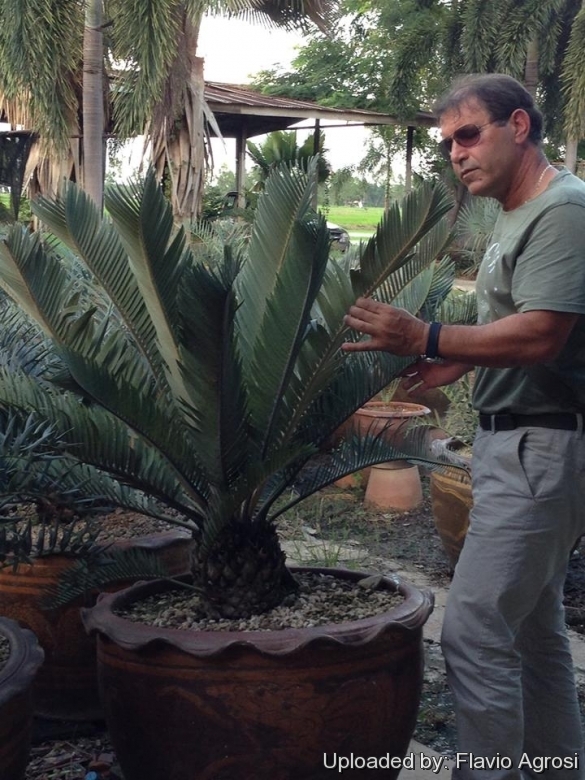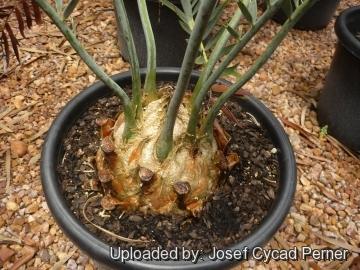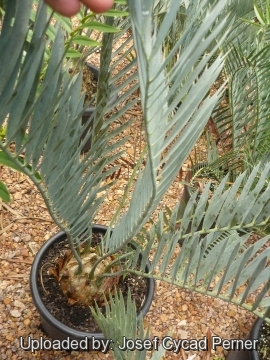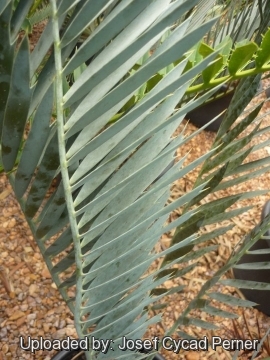
Encephalartos hirsutus Photo by: Flavio Agrosi
Origin and Habitat: Northern escarpment of South Africa, at relatively cool and high elevations.
Synonyms:
Common Names include:
ENGLISH: Venda Cycad
AFRIKAANS (Afrikaans): Venda-broodboom
Description: Encephalartos hirsutusSN|29851]]SN|29851]] is a rare and poorly known species with conspicuously glaucous foliage.
Bibliography: Major references and further lectures
1) Terrence Walters, Roy Osborne “Cycad Classification: Concepts and Recommendations” CABI, 12 gen 2004
2) “Sappi Tree Spotting: Lifer List” Jacana Media, 01 May 2012
 Encephalartos hirsutus Photo by: Josef Cycad Perner
Encephalartos hirsutus Photo by: Josef Cycad Perner Encephalartos hirsutus Photo by: Josef Cycad Perner
Encephalartos hirsutus Photo by: Josef Cycad Perner Encephalartos hirsutus Photo by: Josef Cycad Perner
Encephalartos hirsutus Photo by: Josef Cycad PernerSend a photo of this plant.The gallery now contains thousands of pictures, however it is possible to do even more. We are, of course, seeking photos of species not yet shown in the gallery but not only that, we are also looking for better pictures than those already present.
Read More... Cultivation and Propagation: Encephalartos hirsutusSN|29851]]SN|29851]] is an adaptable plant well suited to warm temperate and subtropical climates, and can handle light frosts. With its bright foliage heightened by full sun is a commanding accent plant in the general landscape and makes an excellent tubbed specimen It can be grown in full sun without its leaves burning. Its color makes it a good subject for the nightscape. Its beauty and ease of horticulture make it one of the finest cycads for use in the garden. It is partially drought tolerant, salt tolerant, and completely wind tolerant. As a garden plant, this cycad will usually hold one or two crowns of leaves, all in good condition. As a seedling, it often loses its previous year's leaves before the new leaves emerge. The seedlings need plenty of room for the tap root to develop and require very good drainage.
Growth rate: It is a long lived slow growing plant taking 15 to 20 years for one of these to produce a cone, so patience is a must.
Soils: It responds well to deep, fertile, slightly acidic, well drained, soil enriched with compost.
Waterings: In cultivation prefers plenty of water, especially in dry weather for optimal growth. But it is eventually drought resistant.
Fertilization: Naturally undemanding for nutrients, it responds very well to regular applications of fertilizer. Growth can be greatly improved through the application of fertilizers. Most growers find that a fertilizer having an even NPK (Nitrogen, Phosphorus, Potassium) balance, and supplemental trace elements, provides a good start for cycads.
Exposure: It will grow in partial shade, however best results are obtained growing the seedlings in full sun.
Hardiness: They do best in a sub-tropical climate and should be kept totally dry in winter at or around 10°C but demonstrate a remarkable degree of cold resistance and may tolerate light frost for short periods if dry, however heavy frosts would probably be fatal.
Propagation: Plants are very rare, however they are easy to propagate from seeds. They can also be propagated from suckers with some patience and experience.












